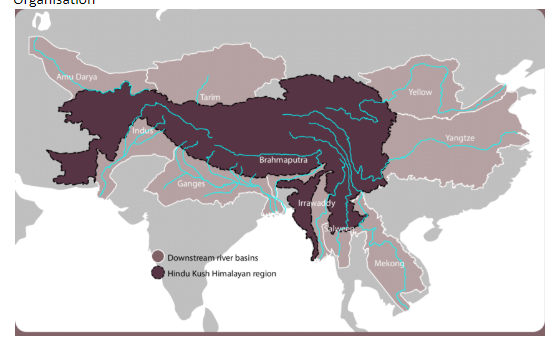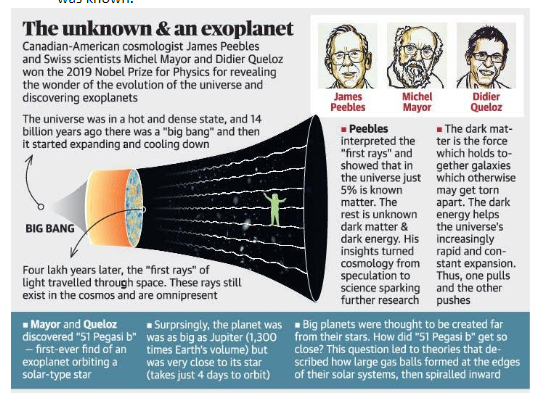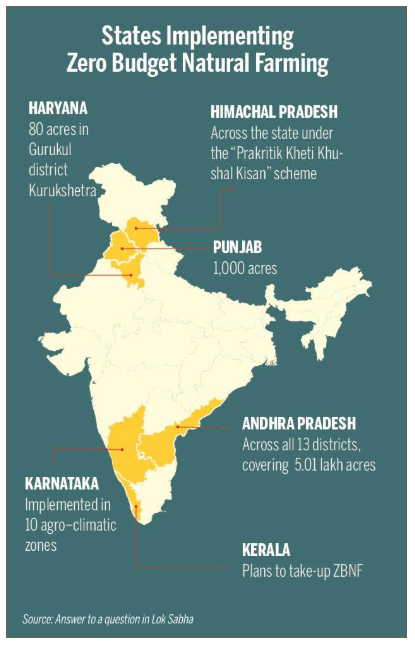IASbaba's Daily Current Affairs Analysis
IAS UPSC Prelims and Mains Exam – 9th October 2019
Archives
(PRELIMS + MAINS FOCUS)
India formally received the first Rafale fighter jet
Part of: GS Prelims and GS Mains III – Security
In News
- The DassaultRafale is a French twin-engine, canard delta wing, multirole fighter aircraft designed and built by Dassault Aviation of France
- Equipped with a wide range of weapons, the Rafale is intended to perform in-depth strike, anti-ship strike and nuclear deterrence missions
- In September 2016, India and France signed a €7.87 billion Inter-Governmental Agreement (IGA) for 36 Rafale multi-role fighter jets in fly-away condition following the surprise announcement by Prime Minister Narendra Modi in April 2015.
- The first batch of the jets will arrive in India only in May 2020. By February 2021, India will receive 18 Rafale jets and by April 2022, India will get all the 36 Rafale.
Do You Know?
- Rafale has been selected for purchase by the Indian Air Force, the Egyptian Air Force, and the Qatar Air Force.
- The Rafale has been used in combat over Afghanistan, Libya, Mali, Iraq and Syria.
INFORMAL SUMMITS
Part of: GS Prelims and Mains GS-II – International Relations
In News
- Second Informal India-China Summit scheduled to take place in Mamallapuram, Tamil Nadu on October 11-12.
- The two countries convened their first Informal Summit in central China’s Wuhan in April 2018.
- By definition, informal summits lack the pomp, protocol and ceremony of formal ones, including delegation-level talks and a pre-set agenda for discussions.
- No agreements are signed, and there is no joint statement or press conference. The two leaders involved hold one-to one discussions, sometimes with only translators present.
- It allows for quietly discussing contentious issues away from media glare and publicity.
About Mamallapuram
- Mamallapuram is also known as Seven Pagodas or Mahabalipuram.
- It was one of two major port cities by the 7th century within the Pallava kingdom.
- It has been declared as a UNESCO World Heritage site.
- Some important structures include: Thirukadalmallai, Descent of the Ganges or Arjuna’s Penance, Varaha Cave Temple, Krishna’s Butterball, Shore temple and Pancha Rathas (Five Chariots).
HINDU-KUSH-HIMALAYAN (HKH) REGION
Part of: GS Prelims and GS-III- Environmental Conservation
In News
- The India Meteorological Department (IMD) will collaborate with meteorological agencies in China and Pakistan to provide climate forecast services to countries in HKH region
- HKH region spans Afghanistan, Bangladesh, Bhutan, China, India, Kyrgyzstan, Mongolia, Myanmar, Nepal, Pakistan, Tajikistan, and Uzbekistan.
- The HKH region is considered the Third Pole [after the North and South Poles], and has significant implications for climate.
- It contains vast cryospheric zones, is also the world’s largest store of snow and ice outside the polar region, and the source of 10 major rivers.
- There are proposals to establish a regional climate centre that will provide forecasting services and climate analyses, which will be under World Meteorological Organisation

2019 NOBEL PRIZE FOR PHYSICS
Part of: GS Prelims and GS-III- Science & Technology
In News
- Three scientists, James Peebles, Michel Mayor and Didier Queloz have won the Nobel Prize 2019 for Physics for their contribution to the understanding of the evolution of the universe and earth’s place in the cosmos.
Cosmic Microwave Background (CMB):
- Canadian-American cosmologist James Peebles, 84, won one-half of the Prize for his theoretical work helping us understand how the universe evolved after the Big Bang.
- His work is focused largely on Cosmic Microwave Background (CMB) radiation, which is electromagnetic radiation left over from the early universe once it had cooled sufficiently following the Big Bang.
Exoplanet:
- The other half went to Swiss astronomers Michel Mayor, 77, and Didier Queloz, 53, for their discovery of an exoplanet that challenged preconceived ideas about planets.
- Using a spectrograph, ELODIE, they predicted the planet by observing the “Doppler effect” — when the star wobbles as an effect of a planet’s gravity on its observed light.
- Today, exoplanets are being discovered very frequently — over 4,000 are known — which is remarkable progress from three decades ago, when not even one exoplanet was known.

https://d39gegkjaqduz9.cloudfront.net/TH/2019/10/09/DEL/Delhi/TH/5_01/8f579252_3250123_101_mr.jpg
2019 NOBEL PRIZE IN MEDICINE
Part of: GS Prelims and GS-III- Science & Technology
In News
- The 2019 Nobel Prize for Physiology or Medicine has been awarded to scientists William G Kaelin, Jr, Peter J Ratcliffe and Gregg L Semenza.
- They received the award jointly for their discoveries of “how cells sense and adapt to oxygen availability”. They established the basis for our understanding of how oxygen levels affect cellular metabolism and physiological function.
- Their research has paved the way for promising new strategies to fight anaemia, cancer and many other diseases.
- It is the 110th prize in the category that has been awarded since 1901.
(MAINS FOCUS)
AGRICULTURE
TOPIC: General Studies 3:
- Major crops cropping patterns in various parts of the country, different types of irrigation and irrigation systems storage, transport and marketing of agricultural produce and issues and related constraints
The truth about ZBNF (zero budget natural farming)
Context:
- National Academy of Agricultural Sciences, based on a brainstorming session that included industry representatives, sent a letter to Prime Minister Narendra Modi opposing Zero Budget Natural Farming (ZBNF) recently
History:
- It was after the pioneering work of Justus von Liebig and Friedrich Wöhler in organic chemistry in the 19th century that chemical fertilizers began to be used in agriculture.
- In the 20th century, the criticisms levelled against Green Revolution technologies were criticisms of the increasing “chemicalisation” of agriculture.
- Claims were made that alternative, non-chemical agricultures were possible. Ex : Organic farming , Rudolf Steiner’s biodynamics, Masanobu Fukuoka’s one-straw revolution and Madagascar’s System of Rice Intensification (SRI).
- In India, such alternatives and their variants included, among others, homoeo-farming, Vedic farming, Natu-eco farming, Agnihotra farming and Amrutpani farming. Zero Budget Natural Farming (ZBNF)
About ‘zero budget natural farming’ (ZBNF):
Pioneered by Subhash Palekar, an innovative farmer from Maharashtra.
- The technique replaces fertilisers and pesticides with concoctions of cow dung, cow urine, jaggery and pulse flour, and ensure perfect soil conditions for plant growth.
- It does so by keeping the top soil covered with crop residues to increase water retention, coating of seeds with cow dung and urine, concoction made of dung, urine, jaggery and pulse flour to multiply soil microbes, concoction to protect plants from pests etc.
Logic behind this:
Soil has all the nutrients plants need. To make these nutrients available to plants, we need the intermediation of microorganisms. For this, he recommends the “four wheels of ZBNF”: Bijamrit, Jivamrit, Mulching and Waaphasa.
- Bijamrit is the microbial coating of seeds with formulations of cow urine and cow dung.
- Jivamrit is the enhancement of soil microbes using an inoculum of cow dung, cow urine, and jaggery.
- Mulching is the covering of soil with crops or crop residues.
- Waaphasa is the building up of soil humus to increase soil aeration.
- Includes three methods of insect and pest management: Agniastra, Brahmastra and Neemastra (all different preparations using cow urine, cow dung, tobacco, fruits, green chilli, garlic and neem).
- 98.5% of the nutrients that plants need is obtained from air, water and sunlight; only 1.5% is from the soil.
- All nutrients are present in adequate quantities in all types of soils. However, they are not in a usable form.
- Jivamrit, Mr. Palekar’s magical concoction, makes these nutrients available to the plants by increasing the population of soil microorganisms.
- Because of ZBNF’s spiritual closeness to nature, its practitioners will stop drinking, gambling, lying, eating non-vegetarian food and wasting resources.
Image : https://timesofindia.indiatimes.com/img/70463084/Master.jpg

Mr. Palekar’ arguments:
- All knowledge created by agricultural universities is false. He calls Liebig as “Mr. Lie Big”.
- He labels chemical fertilizers and pesticides as “demonic substances”, cross-bred cows as “demonic species” and biotechnology and tractors as “demonic technologies”,
- He is critical of organic farming,” is “more dangerous than chemical farming”, and “worse than [an] atom bomb”.
- He calls vermicomposting a “scandal” and Eiseniafoetida, the red worm used to make vermicompost, as the “destructor beast”.
- He also calls Steiner’s biodynamic farming “bio-dynamite farming”.
Research argues:
- Indian soils are poor in organic matter content.
- About 59% of soils are low in available nitrogen;
- About 49% are low in available phosphorus;
- About 48% are low or medium in available potassium.
- Indian soils are also varyingly deficient in micronutrients, such as zinc, iron, manganese, copper, molybdenum and boron.
Solution:
- Location-specific solutions to nurture soil health and sustain increases in soil fertility.
- Scientists suggest soil test-based balanced fertilisation and integrated nutrient management methods combining organic manures (i.e., farm yard manure, compost, crop residues, biofertilizers, green manure) with chemical fertilizers.
Criticisms of ZNBF:
- ZBNF is hardly zero budget. Many ingredients of Mr. Palekar’s formulations have to be purchased.
- There are no independent studies to validate the claims that ZBNF plots have a higher yield than non-ZBNF plots.
- Field trials have recorded a yield shortfall of about 30% in ZBNF plots when compared with non-ZBNF plots.
- The Jivamrit prescription is essentially the application of 10 kg of cow dung and 10 litres of cow urine per acre per month. For a five-month season, this means 50 kg of cow dung and 50 litres of cow urine. Given nitrogen content of 0.5% in cow dung and 1% in cow urine, this translates to just about 750 g of nitrogen per acre per season. This is totally inadequate considering the nitrogen requirements of Indian soils.
Way Forward:
- We need steps to check wind and water erosion of soils.
- We need innovative technologies to minimise physical degradation of soils due to waterlogging, flooding and crusting.
- We need to improve the fertility of saline, acidic, alkaline and toxic soils by reclaiming them. We need location-specific interventions towards balanced fertilisation and integrated nutrient management.
Conclusion:
- While we try to reduce the use of chemical fertilizers in some locations, we should be open to increasing their use in other locations. But such a comprehensive approach requires a strong embrace of scientific temper and a firm rejection of anti-science postures.
- In this sense, the inclusion of ZBNF into our agricultural policy by the government appears unwise and imprudent.
Connecting the dots:
- Zero Budget Natural Farming has no scientific validation and its inclusion into agricultural policy appears unwise. Analyse.
INDIA’S FOREIGN RELATIONS
TOPIC: General Studies 2:
- India and its neighbourhood- relations.
- Bilateral, regional and global groupings and agreements involving India and/or affecting India’s interests
China’s role in Bangladesh while shaping its ties with Dhaka
Context:
- Prime Minister Narendra Modi and Chinese President Xi Jinping to meet in two-day India-China informal summit
- The second informal summit between leaders of India and China is scheduled to take place in the coastal town of Mamallapuram, south of Chennai.(first was wuhan)
- The just-concluded visit (October 6) to India by Bangladesh’s prime minister, Sheikh Hasina.
Wuhan summit:
- The first informal summit between the two leaders was held at Wuhan in April 2018, necessitated by the earlier military stand-off between the Asian giants at Doklam.
- Prudence at the highest political level enabled the two nations to arrive at a modus-vivendi in Wuhan, though the long-festering territorial dispute and an unresolved 4,000 km-plus Line of Actual Control are tenaciously alive.
History:
- In the run up to the 1971 Bangladesh war, the US and China, which had begun their own rapprochement, supported Pakistan, and were opposed to Indian assistance to the East Pakistan political leadership — symbolised by Sheikh Mujibur Rahman.
- Yet, with support from Russia, India achieved what may be described as a spectacular military victory — it liberated Dhaka and handed over power to Mujibur Rahman.
India – China – Bangladesh-Pakistan :
- Indian military victory of 1971 led to a strategic reappraisal in Beijing about its democratic neighbour, whom it had militarily humiliated in October 1962.
- The seeds of the strategic-security anxiety in China about India were sown at that time.
- Beijing’s response was to invest in Pakistan and, in the intervening decades, a deep and opaque Sino-Pak strategic and security relationship was nurtured
- This in turn emboldened Pakistan , to embark upon a proxy war against India (with terrorism as a tool) that began in 1990 and has continued to-date.
- Bangladesh is an active partner of the Xi Jinping-led BRI (Belt and Road Initiative) .
- In the security sector, Bangladesh is also a major recipient of Chinese military inventory, including submarines.
Recent visit of Bangladesh PM takeaways:
- Provides an instructive cue as to how the strategic ties between India and China have evolved and future lessons to be drawn from this bilateral relationship.
- Despite some missteps and hesitation, the bilateral is currently described as the “best ever” and a template for India’s ties with its other neighbours
Way forward:
- India’s abiding regional strategic objective ought to be one which ensures that Bangladesh does not morph into a Pakistan, either by way of being compelled into choosing Beijing over Delhi; or nurturing radical Islamic ideologies domestically.
- The maritime domain, and the Bay of Bengal in particular, with Dhaka as the coxswain, ought to be envisioned at Mamallapuram.
Connecting the dots:
- The Bangladesh-India-China triangle is often obscured by the high visibility accorded to Pakistan in the uneasy relationship between the two Asian giants. Analyse.
(TEST YOUR KNOWLEDGE)
Model questions: (You can now post your answers in comment section)
Note:
- Featured Comments and comments Up-voted by IASbaba are the “correct answers”.
- IASbaba App users – Team IASbaba will provide correct answers in comment section. Kindly refer to it and update your answers.
Q.1) Consider the following statements
- The dark matter is the force which holds together galaxies which otherwise may get torn apart
- The dark energy helps the universe’s increasing-rapid and constant expansion
Which of the statement(s) given above is/are correct?
- 1 only
- 2 only
- Both 1 and 2
- Neither 1 nor 2
Q.2) Which of the following countries are part of Hindu-Kush-Himalayan mountain system
- India
- China
- Myanmar
- Uzbekistan
- Kyrgyzstan
Select the correct answer from codes given below
- 1,2 and 3 only
- 1 and 2 only
- 1,2,3 and 4 only
- All of them
Q.3) Consider the following statementsabout Mamallapuram
- The UNESCO World Heritage site Mamallapuram is also known as Seven Pagodas
- It was one of two major port cities by the 7th century within the Pallava kingdom
- Some important structures include Descent of the Ganges or Arjuna’s Penance, Krishna’s Butterball, Shore temple and Pancha Rathas
Which of the statement(s) given above is/are correct?
- 1 and 2 only
- 2 and 3 only
- 1 and 3 only
- 1,2 and 3
MUST READ
Aarey: For social cost-benefit analysis
A $10-trillion economy needs deep civil service reform
Bad policy: We have no insurance against being openly cheated by health insurance companies
The joker philosophy in a loveless world














